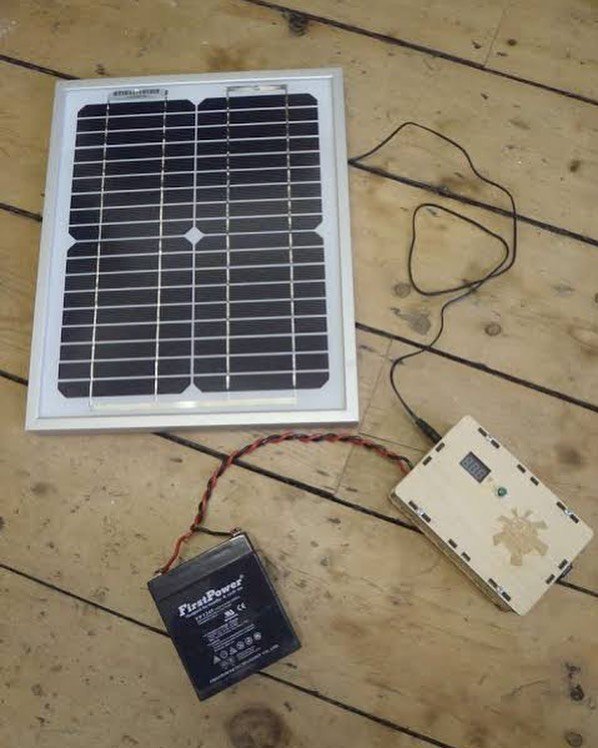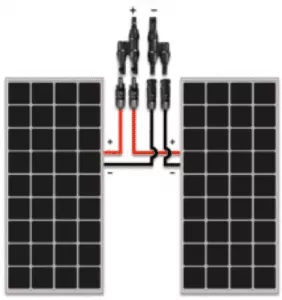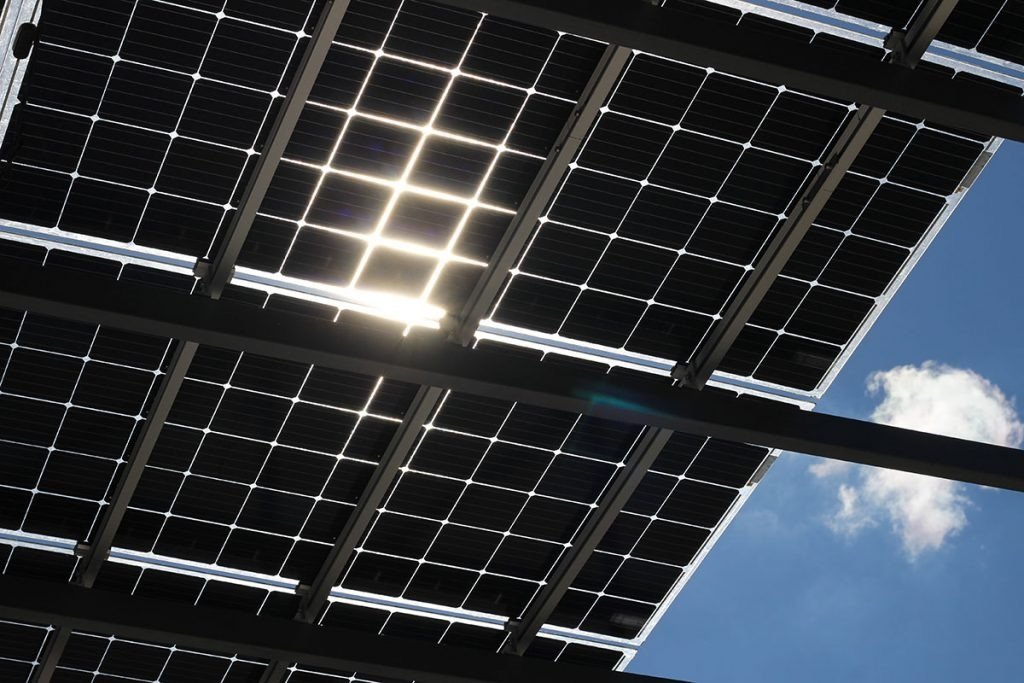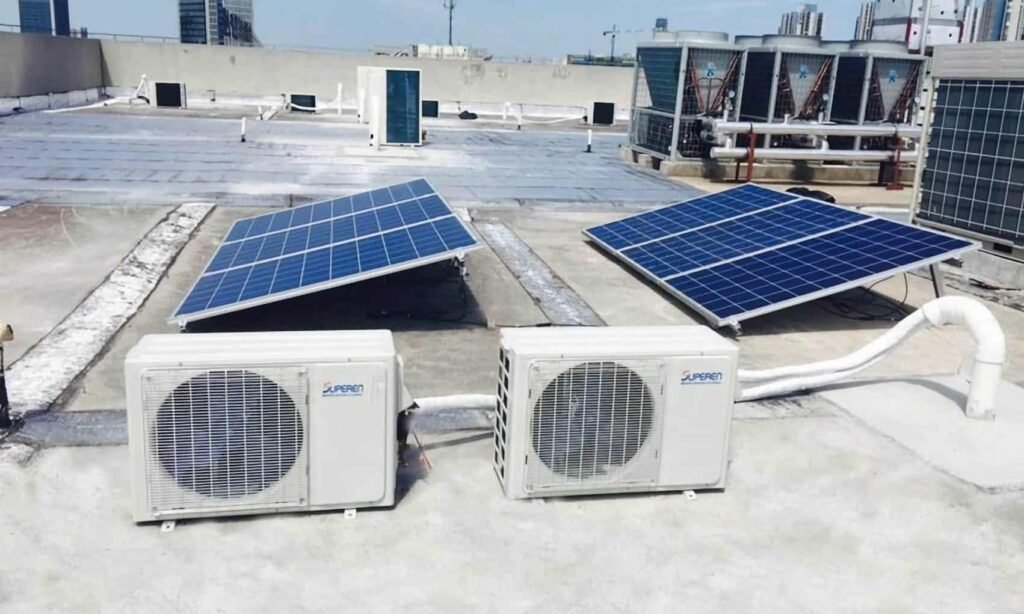
How much energy does a solar panel produce
In this article we will analyze How much energy does a solar panel produce.
How much energy does a solar panel produce
¿ How much energy does a solar panel produces in Polish weather conditions? How long will you turn on the appliances? You can check it out in our latest infographic.
Apart from the conditions for connecting to the grid or the surplus accounting method , the same amount of energy produced in the prosumer installation is certainly interesting.
Assuming the average insolation in Poland, around 950 kWh of electricity can be produced from 1 kWp (1) of photovoltaic panels per year. For example, an installation consisting of 15 panels of 300 Wp each has a total power of 4.5 kWp. This translates to approximately 4,275 kWh of renewable electricity per year. Therefore, a photovoltaic panel (300 Wp) per day can produce approximately 0.78 kWh of energy.
What does this mean in practice? We show it in the infographic, in which we compare the amount of photovoltaic energy produced with the energy demand of selected appliances. We link the size of the installation with the working time of the individual devices. One panel is enough to power the refrigerator throughout the day. Two: they will allow an additional 15 minutes of ironing and the use of an electric kettle for a few minutes. To see all the examples, click on the image. You can find a description of the assumptions made at the bottom of the infographic.
How much electricity does a photovoltaic panel produce? How many photovoltaic panels per 1 kW?
¿ How much energy does a solar panel produces? This question is asked by anyone interested in the topic of photovoltaic energy. Without this knowledge, we could not determine how many photovoltaic modules are needed to meet the energy needs of a home or business. In the article we will try to answer some annoying questions: how much energy does a solar cell produce and many others.
How much energy does a solar panel produce: Efficiency of solar panels
Many factors influence performanceof a photovoltaic plant. The main parameters that are important in choosing the correct location for solar panels are, of course, prolonged and uninterrupted exposure to solar radiation. The longer the cells are exposed to direct sunlight, the higher the efficiency of the electricity produced by the solar panel. An exemplary installation should also have the proper 30-40 degree slope and the possibility of constant cooling from the solar panels. Therefore, it is important to maintain proper distances from the ceiling or adjacent panels. There are many factors that must be taken into account,
¿How much energy does a solar panel produce?
– Nominal panel power
We can find out how much electricity a solar panel produces on the nameplate on the back of the module. Depending on the type of cells (monocrystalline or polycrystalline), the performance will vary significantly. It is also worth noting that the efficiency of currently available panels is much higher than it was in the early 2000s. Photovoltaics is a very intensively developing industry that aims to maximize yields.
On the nameplate we find the parameters maintaining the so-called Standard Test Conditions (STC) are the same for all manufacturers and allow the performance of individual panels to be compared. The first item in the table, Nominal Power, shows the number that the panel will generate under undisturbed conditions during one hour of exposure to maximum solar radiation. However, we must point out that at our latitude, the intensity of the radiation is lower, so we will not be able to fully recreate the so-called STC. When choosing panels and expecting specific panel performance, we must take this factor into account. In the precise calculation of the energy demand and the necessary number of solar panels to cover it, you will get our help!
How many solar panels to generate 1kw?
Modern photovoltaic panels available on the market generate an average of 290-400 W. For our presentation, let’s assume a panel with a power of 335 W, which will operate for one hour at maximum power; our performance will be analog at 335 Wh of energy. To obtain 1kWh, 3 photovoltaic panels must work in parallel for one hour.
Panel size – area
A standard photovoltaic panel is on average 1 m wide and 1.7 m long, so its square area will be 1.7 m2. So, to install 4 solar panels of this size, we will need 6.8 m2 of free space on the roof. Of course, we must take into account the appropriate distances to the chimneys or the edge of the roof. Use our photovoltaic calculator to calculate the space required for solar panels.
Energy demand and size of the photovoltaic installation
According to statistical research, it is assumed that a family of 4 people consumes an average of 4,500 kWh of electricity per year. Dividing this value by the annual yield of a panel (from our calculation: 335W, we will obtain the number of panels necessary to fully satisfy the energy needs of the family. In this case it will be 14 panels. Depending on the economic and spatial possibilities of the future Inverter , the number of panels can be used to cover all or part of the demand, which will greatly allow you to generate savings in the electricity bill and independence from the constant increases in electricity. It is also important to take care of the environment and air quality.
What Makes Solar Panels Work?
To understand how much solar energy each square meter produces, it can be helpful to understand what the panels are actually made of. Here we will describe SunPower solar panels , which are currently the most efficient on the market. Thanks to technology of solar cells Maxeon 3 , has been possible to combine a construction of durable copper ultrapure silicon and a glass liner captures the light that makes the panels are 30% more efficient energy production compared with conventional panels.
You might think that a simple equation would suffice to answer the questions in the title: Suppose a solar panel produces 360 watts and its dimensions are about 100 cm x 170 cm; so each square meter should produce around 211 watts, right?
Not quite. The true test of a photovoltaic system is to check its operation under real conditions. To produce the maximum power per square meter, the solar panel must be properly designed to withstand temperature differences and also to be able to adapt to the spectrum, angle of incidence and amount of light.
Temperature – Some people combine solar energy with heat because the heat comes from strong sunlight, and yet if the panel is too hot it may not work as efficiently. If its temperature exceeds 25 degrees Celsius, energy production is no longer as efficient. The SunPower panels are designed to minimize these losses in energy production ; they are distinguished by a coefficient of resistance at low temperature, that is, decrease in heat-related energy. As a result, energy production losses related to high temperatures are minimized.
Spectrum: It is impossible to eliminate cloudy days from our lives, but contrary to some beliefs, solar panels also work on cloudy days. We owe it to the broad spectrum of light. Some are visible to the human eye, but some waves, such as infrared or ultraviolet, remain invisible. Clouds can block a broad spectrum of visible light, but they don’t block the entire spectrum (as evidenced, for example, by sunburn, which we sometimes suffer even after a day outdoors under cloudy skies). SunPower solar panels collect more infrared and ultraviolet rays than conventional panels. As a result, fewer panels on the roof are enough to meet the energy demand.
The angle of the rays: Each solar installation is unique because each roof is different: the standard variables are the angle, the position on the ground and also the position in relation to the movement of the sun. Solar panel installers generally install the panels so that they are facing south to capture the most light. However, it must be remembered that even thanks to its location, the sun’s rays will fall on the surface of the panel at different angles, depending on the time of day.
Most solar panels are built with anti-reflective glass. It works so that when the panel is illuminated, the rays are sent to the photovoltaic cell as much as possible to produce the maximum amount of energy. The anti-reflective glass in some panels can degrade after prolonged exposure to the elements, but SunPower solar panels are known to have a low rate of degradation.
Amount of light: solar energy production is most effective around noon, but this depends on the location of the installation. Shadows from trees, dust, leaves, and other obstacles can obstruct light access to the panels. Shading not only impairs energy production, it can also damage the panel over time.
For this reason, the preparation of shading and plant performance simulations is crucial. With it, the installation company can not only analyze the shade on the roof, but also verify the design assumptions.
SunSol, as the leader in premium installations, precedes each installation with a yield and shade project.
How many square meters of roof will the photovoltaic system occupy? Due to the wide variety of variables, it is difficult to determine the exact number. However, assuming a production of 211 Watts per square meter, a system designed to design 2 kilowatts will take about 14 square meters, and a system that produces 3 kilowatts – 21 square meters.
Do you have a limited roof area? The new SunPower Maxeon 3 panels are distinguished by the highest performance and reliable technology. They include the first commercially available panels on the market to meet the needs of individual users, capable of producing 370 to 400 Watts. SunPower Maxeon 3 panels are a great option for people looking to maximize profits and electricity production with a limited roof area.
Performance of a photovoltaic plant
How much energy will the solar panel produce during the performance warranty period? What is the impact of the guarantee on profitability?
By reading this article, you will learn how to calculate the total guaranteed energy yield of solar panels. Because it is important? Because by comparing this figure with the price per panel or per installation, you will know how much you will save for each zloty spent .
Currently, 1kWh costs about 55gr. According to the analysis of the Institute of Renewable Energies, we can expect a price increase of up to 40% in the next 25 years.
Every 1Wp of power from the photovoltaic installation will produce approximately 1kWh of power per year (± 10%) in Poland.
This means that an ideal 300 Wp panel will produce 7,500 Wp (300 x 25 = 7,500) in 25 years.
Of course, perfect panels don’t exist. Solar panels lose their efficiency over time. This loss of efficiency is completely normal and unavoidable. The manufacturer specifies the acceptable power loss over the years and includes this information in the performance warranty, linear power warranty, or linear power reduction warranty . Most manufacturers guarantee that their panel will have a power of 80% of its initial power after 25 years of operation.
So how to estimate the guaranteed performance of a given photovoltaic panel under favorable conditions over a 25-year period?
How is total return calculated for 25 years?
To calculate how many kWh a photovoltaic panel will produce in 25 years, we need data on its initial power and performance guarantee.
Linear performance loss takes the form of something like this chart (from the data sheet of the panel Solar BrukBet ):

Note that the warranty does not start at 100%, but generally at 97% (98% for performance giants like SunPower). Also note that the performance drop is roughly equal to. Sometimes the panels stay at 97% or 95% for the first few years before declining linearly thereafter. However, this does not affect our calculations too much.
The guaranteed performance may be higher or lower, but for standard panels it ends in 25 years. The situation is different in the case of glass panels , whose manufacturers guarantee high yields over a period of 30 years. Below is an example of such a warranty from the ZNShine production panel datasheet.
The estimated performance during the warranty period can be calculated from the following formula:
Initial power x number of warranty years x (97% – ((97% – guaranteed percentage of initial performance after this period) / 2))
Sample calculation
REC320NP N-PEAK
320Wp rated panel power
86% of initial power after 25 years
320 x 25 x (97% – ((97% -86%) / 2)) = 91,5% x 8.000 = 7.320 kWh
Also, remember that the Linear Power Warranty is not a fault-free guarantee or a guarantee of correct installation . If the cells of a given photovoltaic panel are damaged during production or installation, the performance guarantee does not apply. The product warranty, which is 10 to 12 years as standard, protects against manufacturing defects. Solar panels with a long product warranty are really expensive. Manufacturers of such panels include SolarWatt, SunPower, REC, and LG.
On the other hand, the fact that the performance guarantee ends at 25 years does not mean that the panels will stop working at that time. Based on experience so far, it is estimated that the current generation of photovoltaic panels will operate for up to 30-40 years. However, after the performance guarantee expires, we will see a further decrease in efficiency with each passing year.
We have reached the end of the article on How much energy does a solar panel produce, I hope the concepts have been understood.






